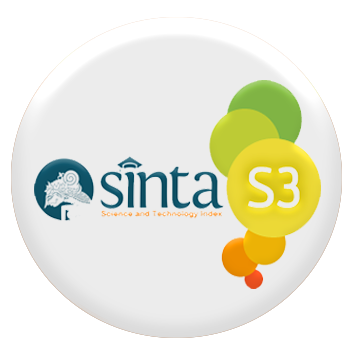The Actualization And Transformation Of Shame Culture In The Siulak Mukai Indigenous Community: An Ethnographic Study
DOI:
https://doi.org/10.29240/ajis.v8i2.14682Keywords:
Cultural Transformation, Ethnography, Indigenous wisdom, Shame culture (malu), Siulak Mukai communityAbstract
This study investigates the concept of malu (shame) within the Siulak Mukai indigenous community of Kerinci, to understand its meanings, values, and functions, as well as examine how it is actualized in daily life and transformed in the context of modernization and digital culture. Adopting a qualitative descriptive design with an ethnographic approach, data were collected through observations, semi-structured interviews, and documentation involving customary leaders, elders, and community representatives. The findings reveal that malu functions as a moral and social safeguard, regulating behavior, preserving personal dignity, and maintaining social cohesion. Its actualization is gendered: for boys, it is expressed through responsibilities as protectors and educators within the clan, while for girls, it is reflected in safeguarding personal and familial honor. The intergenerational transmission of malu is sustained through customary education by ninik mamak, teganai, and depati using advice, metaphors, and communal practices. However, the study also identifies significant erosion of malu among younger generations, influenced by globalization, social media, and the weakening role of traditional leaders. This research contributes to the understanding of indigenous moral systems by demonstrating how shame culture, despite facing decline, remains a central ethical and cultural value that underpins social cohesion and identity in Siulak Mukai. The originality of this study lies in highlighting the transformative challenges of malu in the digital age and proposing culturally grounded strategies for its revitalization through customary institutions, intergenerational education, and integration into formal schooling.
Downloads
References
Al-Jauziyyah, Ibnu Qayyim. Ad-Daa'wa Ad-Dawaa'. Jakarta: Pustaka Imam Asy-Syafi’i, 2009.
Andaryani, Fitri, and Fitriani Fitriani. "Introvert Self Disclosure and Al-Haya in Islamic Perspective: Study of Takhrij and Syarah Hadith." Journal of Takhrij Al-Hadith 1, no. 2 (2022). https://doi.org/10.15575/jth.v1i2.22863.
Arli, Denni, Cheryl Leo, and Fandy Tjiptono. "Investigating the Impact of Guilt and Shame Proneness on Consumer Ethics: A Cross-National Study." International Journal of Consumer Studies 40, no. 1 (2015). https://doi.org/10.1111/ijcs.12183.
BenYishay, Ariel, Pauline Grosjean, and Joe Vecci. "The Fish Is the Friend of Matriliny: Reef Density and Matrilineal Inheritance." Journal of Development Economics 127 (July 2017): 234–49. https://doi.org/10.1016/j.jdeveco.2017.03.005.
Creswell, John W., and J. David Creswell. Research Design: Qualitative, Quantitative, and Mixed Methods Approaches. Sage Publications, 2017.
Farmawati, Cintami. “Al-Haya’ Dalam Perspektif Psikologi Islam: Kajian Konsep Dan Empiris.” Jurnal Studia Insania 8, no. 2 (2020): 99–118. https://doi.org/10.18592/jsi.v8i2.3865.
Fetrus, Fetrus, Basuki Rekso Wibowo, and Fauzie Yusuf Hasibuan. "The Application of Dayak Customary Law In West Kalimantan Towards Fulfilling A Sense of Justice For Victims (Case Study of Indecent Acts)." Asian Journal of Social and Humanities 3, no. 1 (November 2024): 45–55. https://doi.org/10.59888/ajosh.v3i1.424.
Fortunato, Laura. "The Evolution of Matrilineal Kinship Organization." Proceedings of the Royal Society B: Biological Sciences 279, no. 1749 (October 2012): 4939–45. https://doi.org/10.1098/rspb.2012.1926.
Gallagher, Mary E. "Mobilizing the Law in China: 'Informed Disenchantment' and the Development of Legal Consciousness." Law & Society Review 40, no. 4 (December 2006): 783–816. https://doi.org/10.1111/j.1540-5893.2006.00281.x.
Hasnadi, Hasnadi. “Penerapan Nilai-Nilai Karakter Melalui Budaya Sekolah.” IDARAH: Jurnal Pendidikan Dan Kependidikan 3, no. 2 (2019): 158–72.
Downloads
Published
How to Cite
Issue
Section
Citation Check
License
Copyright (c) 2025 Wawan Septian, Oki Mitra, Wisnarni, Muhammad Alfian

This work is licensed under a Creative Commons Attribution-NonCommercial-ShareAlike 4.0 International License.
Authors who publish with this journal agree to the following terms:- Authors retain copyright and grant the journal right of first publication with the work simultaneously licensed under a Creative Commons Attribution License (CC BY-NC-SA 4.0) that allows others to share the work with an acknowledgment of the work's authorship and initial publication in this journal.
- Authors are able to enter into separate, additional contractual arrangements for the non-exclusive distribution of the journal's published version of the work (e.g., post it to an institutional repository or publish it in a book), with an acknowledgment of its initial publication in this journal.
- Authors are permitted and encouraged to post their work online (e.g., in institutional repositories or on their website) prior to and during the submission process, as it can lead to productive exchanges, as well as earlier and greater citation of published work (See The Effect of Open Access).







